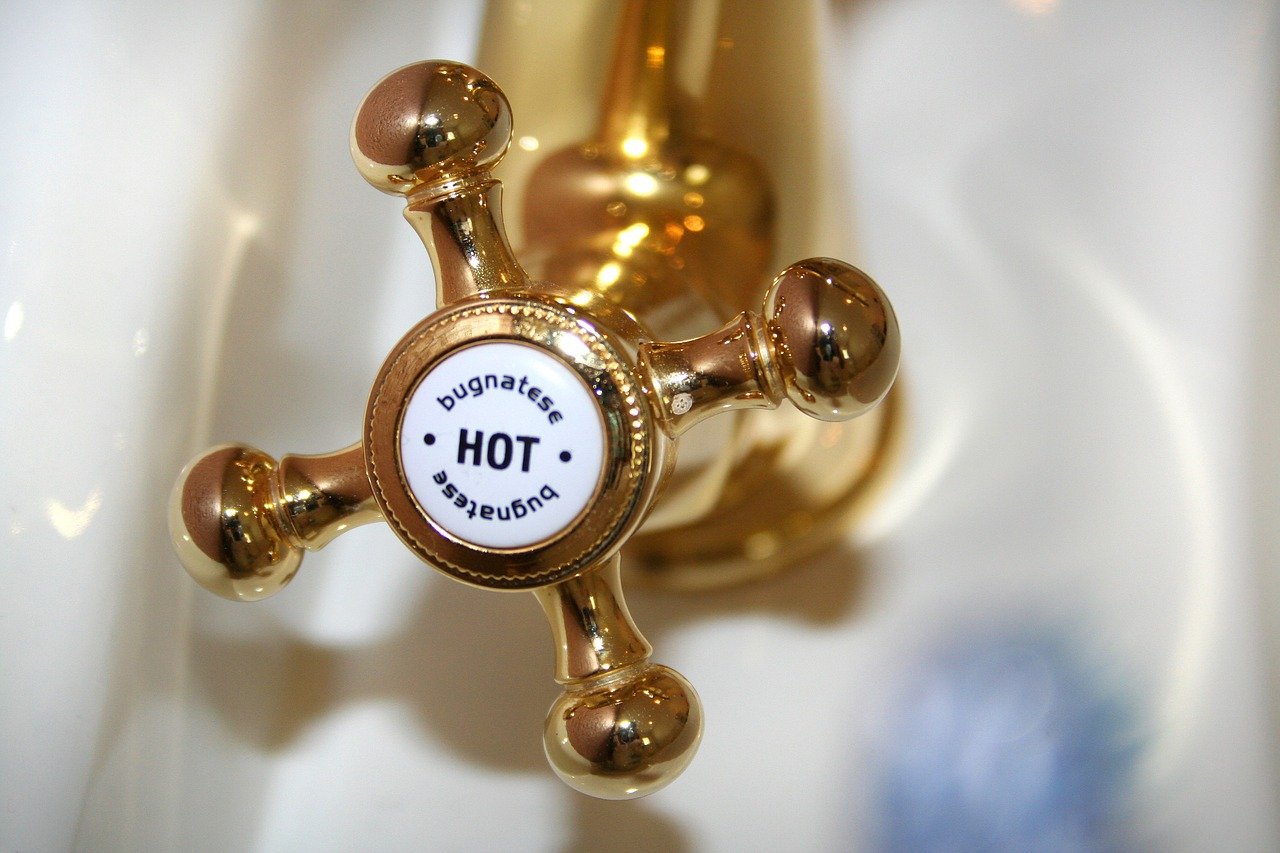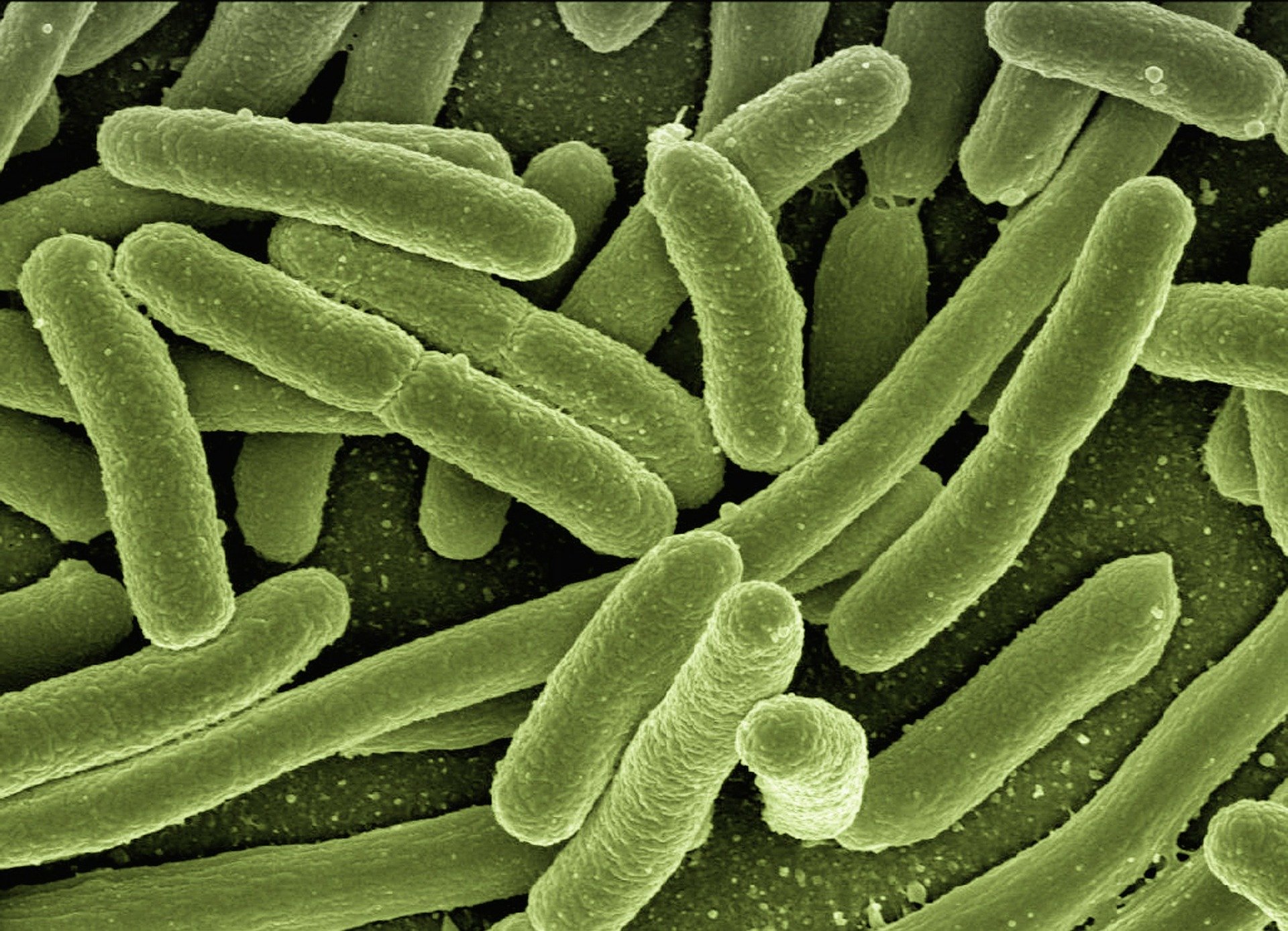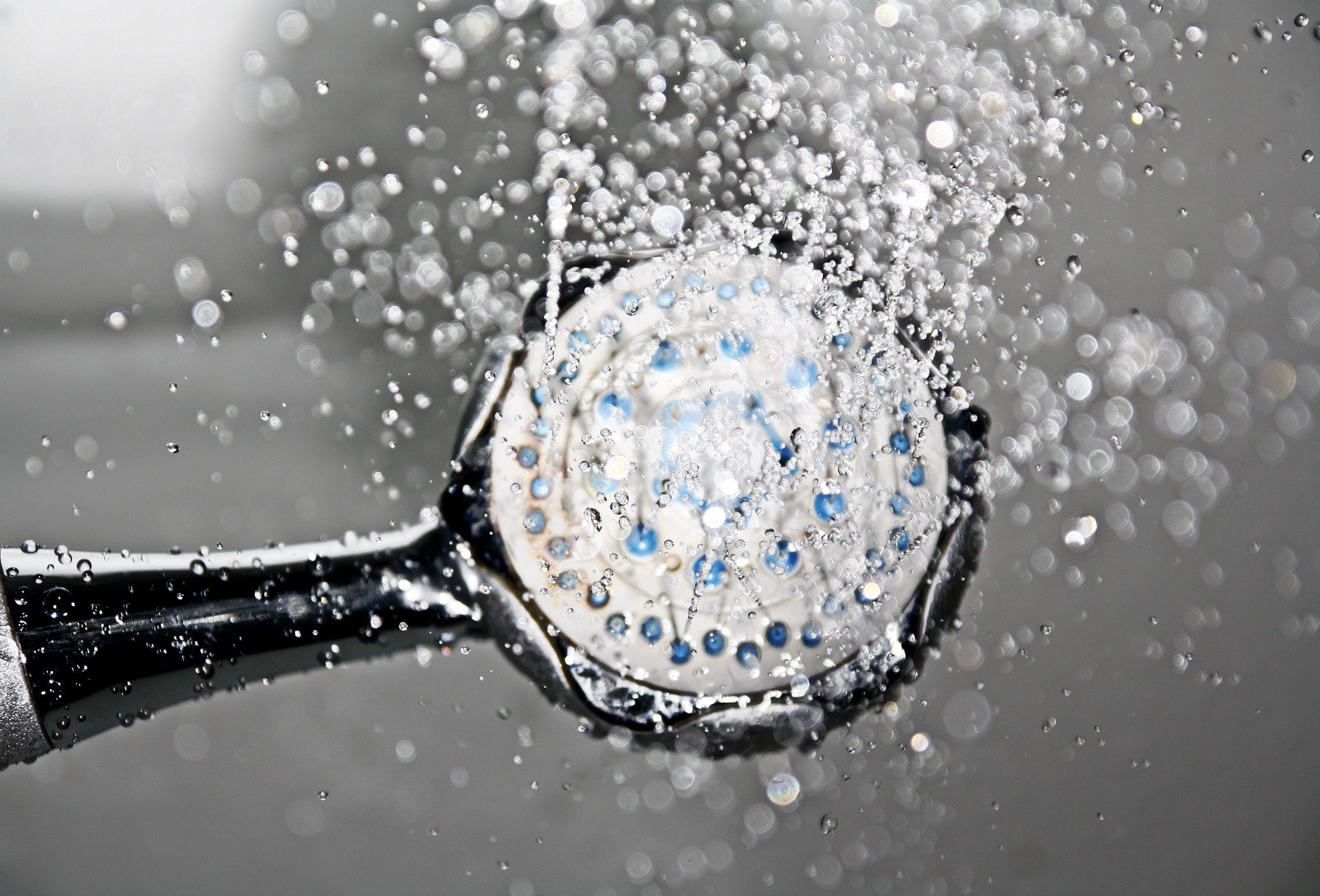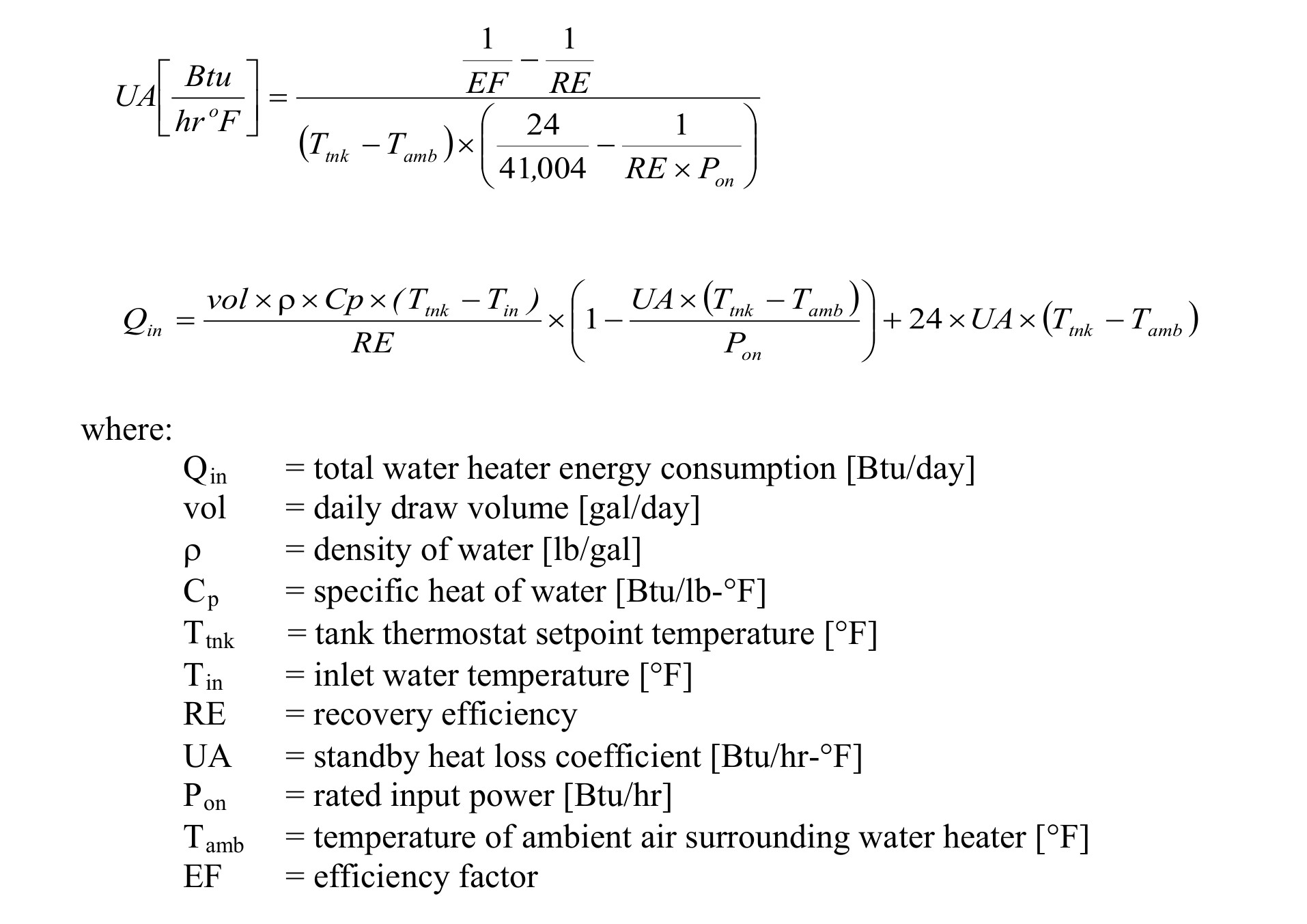blog post
Crank Up Your Hot Water Heater!
Everyone knows that you should turn down your hot water heater to save money, right? Not so fast! Here is a little unconventional wisdom and the reason why mine is cranked to the max...
Everyone knows that you should turn down your hot water heater to save money, right? Not so fast! Here is a little unconventional wisdom and the reason why mine is cranked to the max...
 What is the best temperature setting for your hot water tank? A quick web search will turn up plenty of opinions, most of them recommending a setpoint of 120° F with
the usually stated reasons being energy savings and reducing the risk of scalding. Always one to buck a trend, I have been setting mine
as high as it will go for several years now. That, and a recent "boil water" order due to contamination in the Fredonia, NY municipal water system inspired
me to take a deeper dive into this issue and in the process of doing so,
I quickly came to the conclusion that most of the aforementioned advice is the result of groupthink - bloggers and writers are simply regurgitating
"facts" from other bloggers and writers
without doing proper research or applying critical thinking skills. I'm about to make a rather unconventional recommendation, but I'll provide supporting documentation and
some solid reasoning to back my conclusion.
What is the best temperature setting for your hot water tank? A quick web search will turn up plenty of opinions, most of them recommending a setpoint of 120° F with
the usually stated reasons being energy savings and reducing the risk of scalding. Always one to buck a trend, I have been setting mine
as high as it will go for several years now. That, and a recent "boil water" order due to contamination in the Fredonia, NY municipal water system inspired
me to take a deeper dive into this issue and in the process of doing so,
I quickly came to the conclusion that most of the aforementioned advice is the result of groupthink - bloggers and writers are simply regurgitating
"facts" from other bloggers and writers
without doing proper research or applying critical thinking skills. I'm about to make a rather unconventional recommendation, but I'll provide supporting documentation and
some solid reasoning to back my conclusion.There are two main aspects that are affected by your hot water tank's temperature setting - safety and efficiency. Let's take a look at those individually, starting with safety.
Safety
The most obvious safety issue is scalding. Certain groups of people such as infants and the elderly are more subsceptible to scalding from hot water (due to thinner skin and slower reaction times) however in general, 120° F is the maximum recommended tap water temperature because at that temperature, it would take 5 minutes of exposure to sustain a third degree burn 1. Following is a table showing the time and temperature required for a hot water burn:
| Time required to sustain a third degree burn1 | |
| 155° F | 1 second |
| 140° F | 5 seconds |
| 130° F | 35 seconds |
| 120° F | 5 minutes |
Great! We've established that 120° F is a relatively safe temperature for the water coming out of your tap. Please keep that in the back of your mind and I'll come back to this in a bit...
A second safety issue which is not as widely considered is that of bacterial infection and the water's potability. Tepid water is an ideal breeding ground for a variety of bacteria and other microorganisms. The most widely used strategy to manage these organisms in a home's hot water supply is to maintain the hot water temperature at a level that will inhibit their growth. The most common problem that arises from contaminated water in hot water tanks is Legionnaires' disease, which is usually transmitted by breathing in mist from water containing Legionella bacteria. It causes a form of pneumonia along with flu-like symptoms, and an estimated 52,000-70,000 Americans suffer from this disease every year.5 It was first discovered after an outbreak at an American Legion convention at the Bellevue-Stratford Hotel in Philadelphia, PA where there were 182 reported infections and 29 deaths. American Legion members are known as Legionnaires so this newly discovered bacteria and disease were named after that outbreak. Legionnaires' disease kills more people in the U.S. than any other reported waterborne disease5 - its fatality rate varies between 5% and 80% based on underlying conditions with an overall fatality rate of 10% 2 3. A study done in 2004 which tested the water supply of homes in the United States, Canada and Europe found that over 17% were contaminated with Legionella. In one area, a third of the homes tested were contaminated! 4
There's not a lot that most people can do about preventing Legionella from entering their home's water supply - its either in there or it isn't. Contamination can happen in a private well or a municipal water system. This means that we have no choice but to assume Legionella is present. So what do we do about it? In water below 68° F, it becomes inactive and is unlikely to cause harm. Between 68° F and 113° F is the perfect temperature range for this bacteria to multiply and grow. Once water reaches 122° F, members of the bacterial colony will begin to die off and at 158° F the entire colony will be killed instantly. The following chart will provide this info at a glance:
| The effect of temperature and time on the survival of Legionella6 | ||
| Water Temperature | % of colony killed | Time |
| Above 158° F | 100% | Instantly |
| 140° F | 90% | 2 minutes |
| 122° F | 90% | 2 hours |
| 118° F | 0% | can survive but do not multiply |
| 90° F | 0% | ideal growth range |
| 77° F | 0% | growth range |
| Below 68° F | 0% | alive, but dormant |
As you can see, although you can start to kill Legionella bacteria around 122° F, the only way to eradicate it all is to heat the water above 158° F. At any temperature above 122° F, the longer you can hold the water at that temperature, the more bacteria you will kill. Something to keep in mind is that setting the thermostat on your hot water heater to a certain temperature doesn't mean that the internal temperature of the entire tank is at that temperature. Some areas of the tank may be hotter, others cooler. Also, the hot water tank thermostat isn't exactly a precision instrument. The calibration from one tank to another could be off, and most thermostat dials don't even have temperature readings - just vague terms like "warm", "hot" and "very hot". If you have your hot water tank set to 120° F, there is a very real possibility that parts of your tank (if not the whole thing) are a Legionella breeding ground.
 Unless you are able to kill all of the bacteria in the tank, even if they are not multiplying in the tank, once they get out into the water line and away from the
source of heat, the bacteria will cool down in the pipe and begin to multiply again. That's why its important to get your tank as hot as possible to kill as much of
the colony as possible before they have a chance to make it into the water line. The hotter you can get the water and the longer you can hold it at that temperature,
the more you will kill. The maximum capability of most residential hot water heaters is around 160° F so it is possible that even if you have
it cranked all the way up, it might not reach that magical 158° F point, but the closer you can get the better! The hot water tank in my home is a standard unit,
nothing special - and using a temperature probe held in the stream of my kitchen faucet, I measured 155° F. Due to heat losses in the pipes between
the tank and the faucet, the temperature in the tank is probably a little bit higher than that.
Unless you are able to kill all of the bacteria in the tank, even if they are not multiplying in the tank, once they get out into the water line and away from the
source of heat, the bacteria will cool down in the pipe and begin to multiply again. That's why its important to get your tank as hot as possible to kill as much of
the colony as possible before they have a chance to make it into the water line. The hotter you can get the water and the longer you can hold it at that temperature,
the more you will kill. The maximum capability of most residential hot water heaters is around 160° F so it is possible that even if you have
it cranked all the way up, it might not reach that magical 158° F point, but the closer you can get the better! The hot water tank in my home is a standard unit,
nothing special - and using a temperature probe held in the stream of my kitchen faucet, I measured 155° F. Due to heat losses in the pipes between
the tank and the faucet, the temperature in the tank is probably a little bit higher than that. Legionella isn't the only microorganism that could be living in your hot water tank - there are plenty of other nasties that can find their way in there, and heating them up will kill those too. Just a few examples:
| Heat Inactivation of Microorganisms7 | ||
| Organism | Temperature | Time |
| E Coli | 131° F | 30 minutes |
| Giardia | 131° F | 5 minutes |
| Hepatitis | 140° F | 30 minutes |
| Salmonella | 150° F | less than 1 minute |
Note that all of these temperatures are well above the commonly recommended 120°F setting! Maxing out the thermostat on your hot water tank will provide some protection against those microorganisms as well.
 Now that we've established the fact that a higher water tank temperature is safer from the standpoint of bacteria and other microorganisms,
what about scalding? Obviously, 160 degree water coming out of your faucet or showerhead is a serious burn risk! The solution is a simple one - mix
the hot water with cold to bring it back down to 120° F, or whatever temperature you prefer. The easiest way to do this is something you are doing
already - simply turn on the cold water along with the hot to get the temperature you need. When you take a shower, unless your hot water tank is set
VERY low, I'm assuming you don't just blast the hot water - you mix in a little cold too. With your hot water tank turned all the way up, you'd be
doing the same thing, except using a larger percentage of cold water than before. This solution works great for a responsible adult with a full
knowledge of what is going on, but what if you have children, or you have a visitor stop by to use your bathroom and they don't realize how hot
your water is? If you want to limit the maximum temperature at your faucets to 120° F, you need
to install a mixing valve. A mixing valve automatically does the exact same thing you do manually when you are standing in your shower - its a device that blends hot and cold water together to achieve a temperature between those two
extremes. There are a couple of ways you can do this - one is with "point of use" mixing valves installed at every faucet and
showerhead. This tends to get a bit pricey since they range in price from $40-$100 (though I have seen some as low as $20-25 on eBay). The second option
is to install one mixing valve right after the hot water tank. You can buy a valve specifically designed for this purpose or build one yourself by
running a line from the cold water supply to the hot water output; a valve at the end of that cold water line will allow you to adjust the
amount of cold water being injected into the "hot" line. With a fancy, purpose built mixing valve, you may be able to use a dial right on the valve
itself to set the exact temperature you want (some even have a thermometer gauge built right in), however with a DIY mixing valve like I've described
here, you will need to play with the setting a bit until you get the final water temperature you want. Once you've set it though, you shouldn't need to
touch it again unless you change the heat setting on your hot water tank or the temperature of the cold water being supplied to your house changes.
Now that we've established the fact that a higher water tank temperature is safer from the standpoint of bacteria and other microorganisms,
what about scalding? Obviously, 160 degree water coming out of your faucet or showerhead is a serious burn risk! The solution is a simple one - mix
the hot water with cold to bring it back down to 120° F, or whatever temperature you prefer. The easiest way to do this is something you are doing
already - simply turn on the cold water along with the hot to get the temperature you need. When you take a shower, unless your hot water tank is set
VERY low, I'm assuming you don't just blast the hot water - you mix in a little cold too. With your hot water tank turned all the way up, you'd be
doing the same thing, except using a larger percentage of cold water than before. This solution works great for a responsible adult with a full
knowledge of what is going on, but what if you have children, or you have a visitor stop by to use your bathroom and they don't realize how hot
your water is? If you want to limit the maximum temperature at your faucets to 120° F, you need
to install a mixing valve. A mixing valve automatically does the exact same thing you do manually when you are standing in your shower - its a device that blends hot and cold water together to achieve a temperature between those two
extremes. There are a couple of ways you can do this - one is with "point of use" mixing valves installed at every faucet and
showerhead. This tends to get a bit pricey since they range in price from $40-$100 (though I have seen some as low as $20-25 on eBay). The second option
is to install one mixing valve right after the hot water tank. You can buy a valve specifically designed for this purpose or build one yourself by
running a line from the cold water supply to the hot water output; a valve at the end of that cold water line will allow you to adjust the
amount of cold water being injected into the "hot" line. With a fancy, purpose built mixing valve, you may be able to use a dial right on the valve
itself to set the exact temperature you want (some even have a thermometer gauge built right in), however with a DIY mixing valve like I've described
here, you will need to play with the setting a bit until you get the final water temperature you want. Once you've set it though, you shouldn't need to
touch it again unless you change the heat setting on your hot water tank or the temperature of the cold water being supplied to your house changes.
Bonus: One side benefit to turning your hot water tank all the way up and using a mixing valve is it makes your hot water tank act like it is larger! Since you are mixing cold water with hot, for a given volume of water coming out of your tap, you are only using a percentage of that as hot water - the rest is being made up with cold. This method can make a 40 gallon tank act like a 60 gallon tank for a tiny fraction of the cost of installing a new tank! Having this superheated water also opens up additional possibilities such as being able to run a dedicated line to your washing machine or dishwasher to supply the hottest water possible to those appliances, while using the mixing valve to provide regular hot water to faucets and showerheads. (Our blog post, "Increase Your Home's Hot Water Capacity provides some more detail about this concept.)
Now that we have touched on some of the benefits to a higher hot water tank temperature setting, let's address the obvious elephant in the room - "How much is this higher temperature setting going to cost?"
Efficiency
This is the reason for the recommendations plastered all over the Internet, telling people to turn down their hot water tanks. Supposedly, you will save money. Will you? Yes - almost certainly, but how much, and is the savings worth it? Read on...
It takes extra gas or electricity to heat water to a higher temperature, and even when you aren't using the hot water, there is still heat escaping from the tank because there is no perfect insulation. This is known as "standby heat loss" in the industry. Even if no hot water is being used, heat will escape through the insulation into the room, through the flue (for a gas or propane hot water tank) and through the water pipes via convection. As the heat escapes, the water temperature in the tank will drop and every now and then, the hot water tank will need to kick on to get back up to its setpoint. The amount of heat lost from the tank will be higher when there is a greater difference between the temperature inside the tank and the temperature outside. This is what is known as the "Delta T", mathematically expressed as "ΔT". A hot water tank that is set to 120° F in a 60° F basement would have a ΔT of 60° F. Setting that same tank to 160° F would give it a ΔT of 100° F. Everything else being equal, the increase in ΔT means that the tank with the higher setting will lose heat faster. There's nothing we can do about that - its governed by the laws of physics. We know it is happening, but what we really want to know is: at what level is it happening and how much does that extra heat loss cost?
 One of the most common methods used by energy analysts to estimate water heater energy consumption is "WHAM", which is an acronym for "Water Heater Analysis Model"8
It uses the formula shown to the right to estimate the energy use of a tank style hot water heater under various conditions. I converted this formula into an Excel spreadsheet
and confirmed that it was working correctly by running data through it from a 2013 Department of Energy study that used WHAM,12 verifying that the resulting calculations
were the same as what was computed in the study.
One of the most common methods used by energy analysts to estimate water heater energy consumption is "WHAM", which is an acronym for "Water Heater Analysis Model"8
It uses the formula shown to the right to estimate the energy use of a tank style hot water heater under various conditions. I converted this formula into an Excel spreadsheet
and confirmed that it was working correctly by running data through it from a 2013 Department of Energy study that used WHAM,12 verifying that the resulting calculations
were the same as what was computed in the study. Based on a family of four using an average of 63.1 gallons of hot water per day, a standard hot water tank in a 60 degree room with a 54 degree water inlet temperature and current natural gas prices for my home ($0.0000067169/BTU), I ran the numbers through the WHAM model to calculate a cost of $130.05/year to run the hot water tank set at 120° F. Changing the temperature setpoint to 160 degrees resulted in a yearly cost of $134.93/year. That's a cost increase of $4.88 over the entire year! I don't know about you, but I will gladly pay $5/year to kill any nasties that might get into the tank and also make my 40 gallon tank provide the same quantity of hot water as a 60 gallon unit!
I also went ahead and used a hot water storage tank heat loss calculator9 to compute the amount of heat loss from a standard hot water tank and came up with very similar results. According to that calculator, standby heat losses on a hot water tank set to 120° F came to $3.92/yr and $7.37/yr for a tank set to 160° F, a difference of only $3.45/year! It is encouraging that I got very similar numbers using two different methods, but even if my calculations were off by a factor of 10, the additional cost to max out the hot water tank would still be dirt cheap insurance against bacterial infection!
 If you do a web search looking for information related to cost savings to turn down your hot water tank, almost every article you find will regurgitate a tiny blurb on
the US Energy Department's web site saying that setting your hot water tank to 140° F instead of 120° F "can waste anywhere from $36 to $61 annually in standby heat losses and more than $400 in demand losses".10 This is obviously significantly more than what I have calculated above.
Rather than do their own research, everyone just seems to take this data as gospel, even though there are absolutely no sources quoted nor any indication whatsoever as to where these numbers came from.
It is shocking to me that anyone with even the slightest hint of curiosity would blindly accept these completely unsubstantiated figures!)
If you do a web search looking for information related to cost savings to turn down your hot water tank, almost every article you find will regurgitate a tiny blurb on
the US Energy Department's web site saying that setting your hot water tank to 140° F instead of 120° F "can waste anywhere from $36 to $61 annually in standby heat losses and more than $400 in demand losses".10 This is obviously significantly more than what I have calculated above.
Rather than do their own research, everyone just seems to take this data as gospel, even though there are absolutely no sources quoted nor any indication whatsoever as to where these numbers came from.
It is shocking to me that anyone with even the slightest hint of curiosity would blindly accept these completely unsubstantiated figures!)
Interestingly, the Department of Energy's web site also has an energy cost calculator for water heaters11, and when I use their own calculator to run the numbers using the exact same data and assumptions as above, their calculator shows that a plain jane, base model gas water heater would cost a family of four $253 to run for an entire year. Yet we are supposed to believe that turning up the thermostat by 20 degrees is going to waste more than $461 per year? Think about it this way: They are saying that the annual cost for that hot water tank to raise the temperature of the incoming water by 70° F is $253, but to heat that same water an additional 20° F will cost $714? Something isn't right here - maybe they didn't include sources for a reason! I have reached out to the Department of Energy to request supporting documentation as to where they came up with these numbers. So far, all I've received is an acknowledgement that they received my request. I will be sure to update this post if I hear back from them with any meaningful data.
Conclusions
Setting your hot water heater as high as it can go will make it extremely difficult for common microorganisms to contaminate your home's hot water supply and will also
provide a 50% increase in available hot water - for almost no additional cost! It does increase the possibility of scalding, however this risk can be mitigated by
installing a relatively inexpensive mixing valve.
Given the above, it will probably not surprise you to learn that I have the hot water tank in my own home cranked as hot as it will go, however we all have different living situations and priorities so I encourage you to do your own research and draw your own conclusions. I hope the information I've presented here provides you with some thought provoking insight! If you have any comments or questions, please don't hesitate to contact me.
References:
Most of the facts presented in this article are easily found and verified via a simple Google search, however I have included links to some of the more important and/or esoteric sources below, which are also footnoted in the body of the text above.
Most of the facts presented in this article are easily found and verified via a simple Google search, however I have included links to some of the more important and/or esoteric sources below, which are also footnoted in the body of the text above.
- American Burn Association Scald Injury Prevention Educator's Guide
- "Legionella Infection" article at Medscape.com
- "Legionella (Legionnaires' Disease and Pontiac Fever)" section of CDC web site
- EPA funded study "Legionella in Residential Homes" by Janet E. Stout, Ph.D and Robert R. Muder, M.D.
- "Management of Legionella in Water Systems" by the National Academies of Sciences, Engineering & Medicine
- "Legionella and the Prevention of Legionellosis", 2007, World Health Organization
- Effect of Heat on the Sterilization of Artificially Contaminated Water by Howard D. Backer, MD
- WHAM: A simplified Energy Consuption Equation for Water Heaters
- Armstrong Water Heater Storage Tank Heat Loss Calculator (Microsoft Excel Spreadsheet)
- Savings Project: Lower Water Heating Temperature at Energy.gov
- Energy Cost Calculator for Electric and Gas Water Heaters at Energy.gov
- Department of Energy study: Assessing the Energy Savings of Tankless Water Heater Retrofits in Public Housing
About the author: Jon Steiger is a Licensed Real Estate Broker and founder of Brick Nest Realty in Fredonia, NY. For a brief bio and contact information, please check out the "meet our team" section of the Brick Nest Realty web site. For more articles like this one, please visit our blog.
Tweet

B R I C K N E S T
R E A L T Y
|
Brick Nest Realty 4587 West Main Road Fredonia, NY 14063 716.321.1100 home@bricknestrealty.com |
© Brick Nest Realty. All Rights Reserved.
